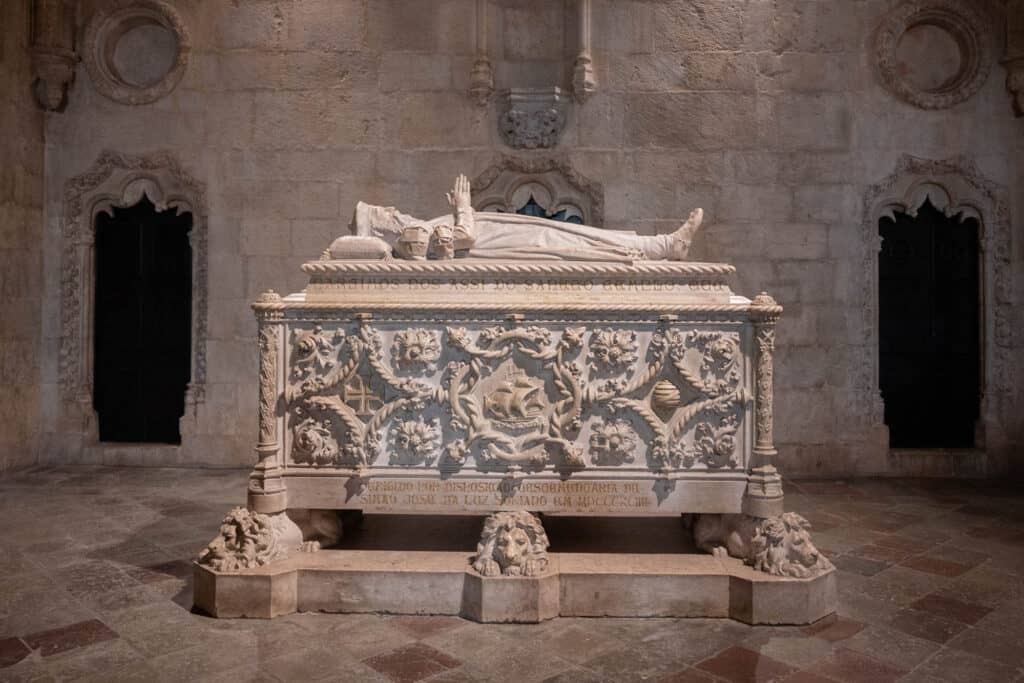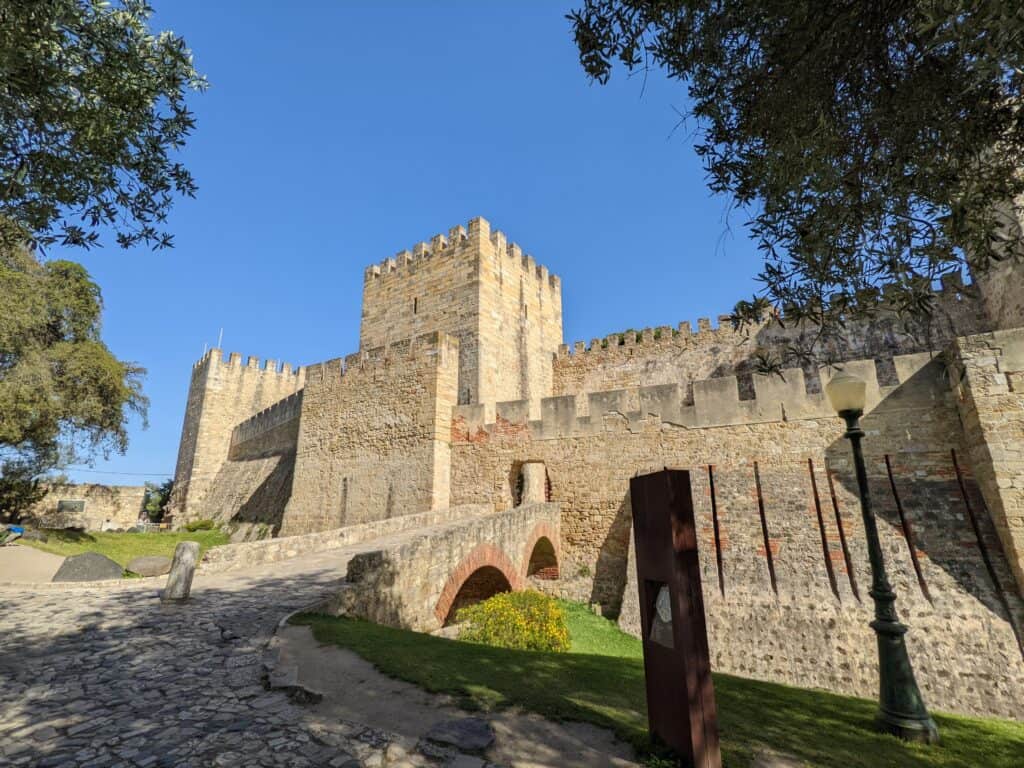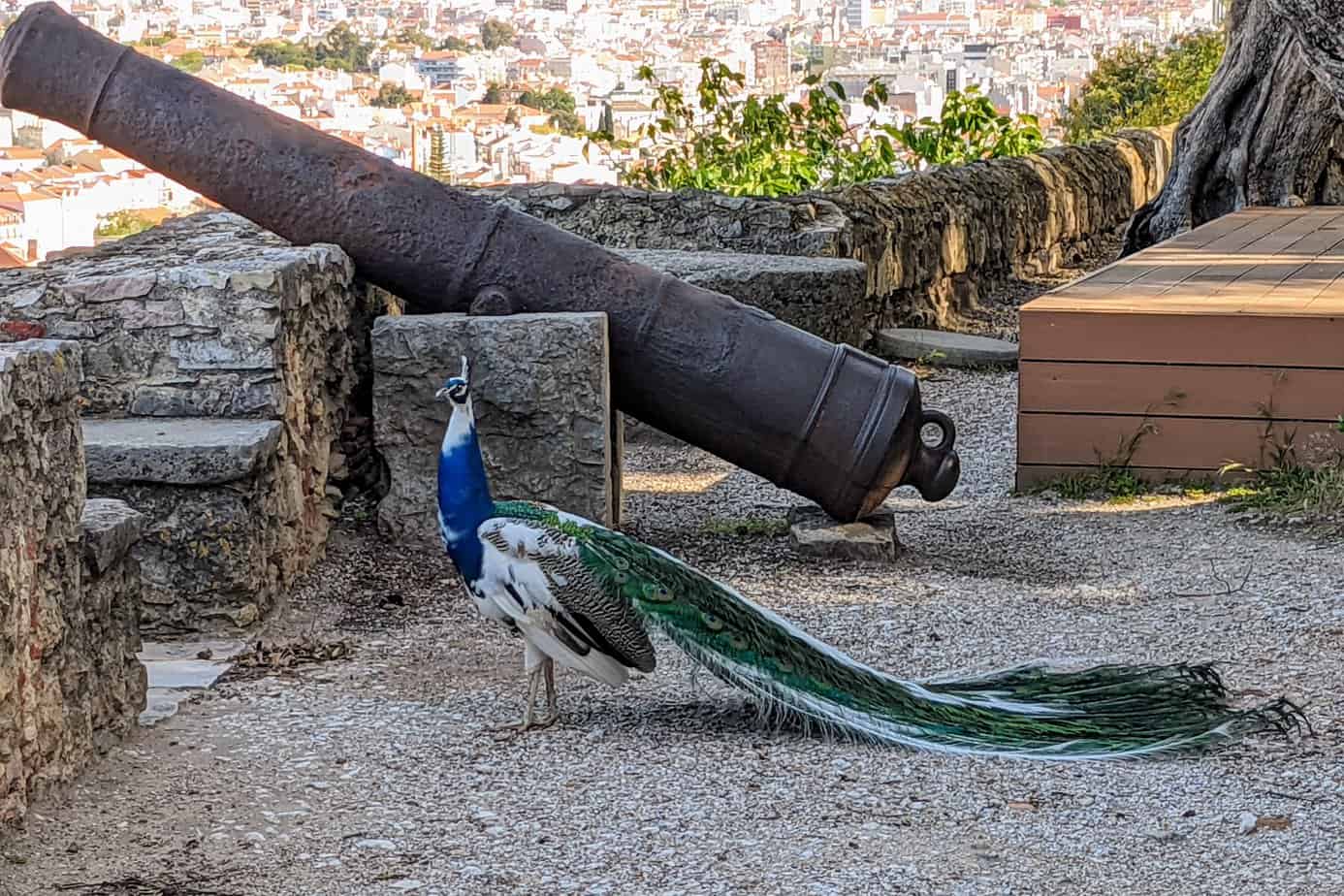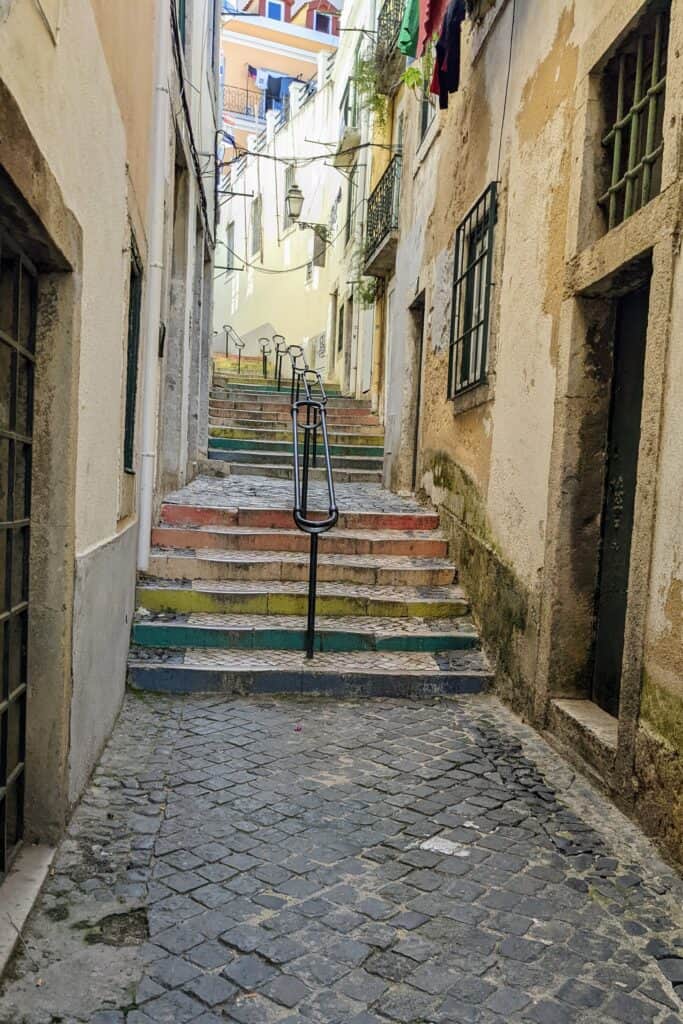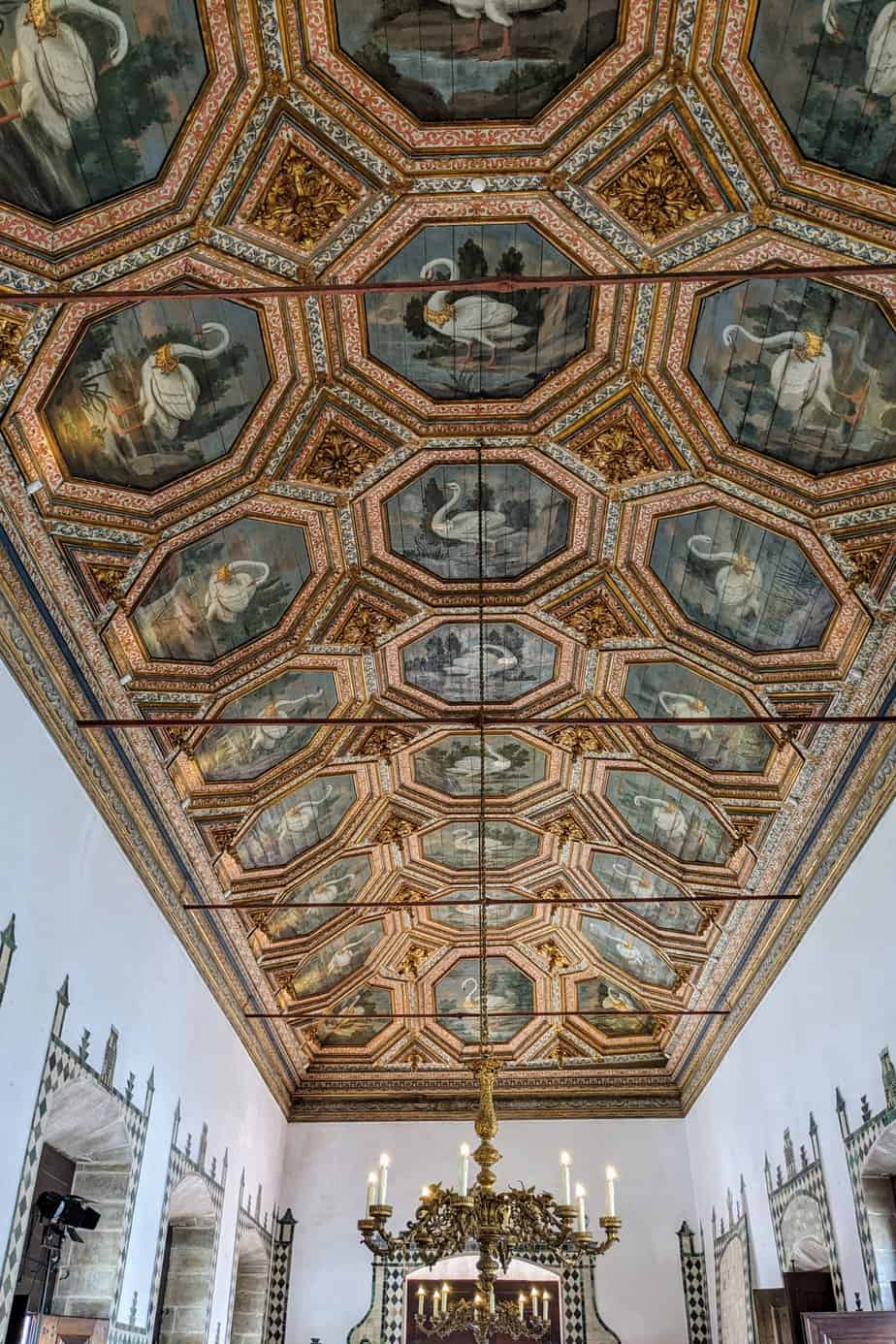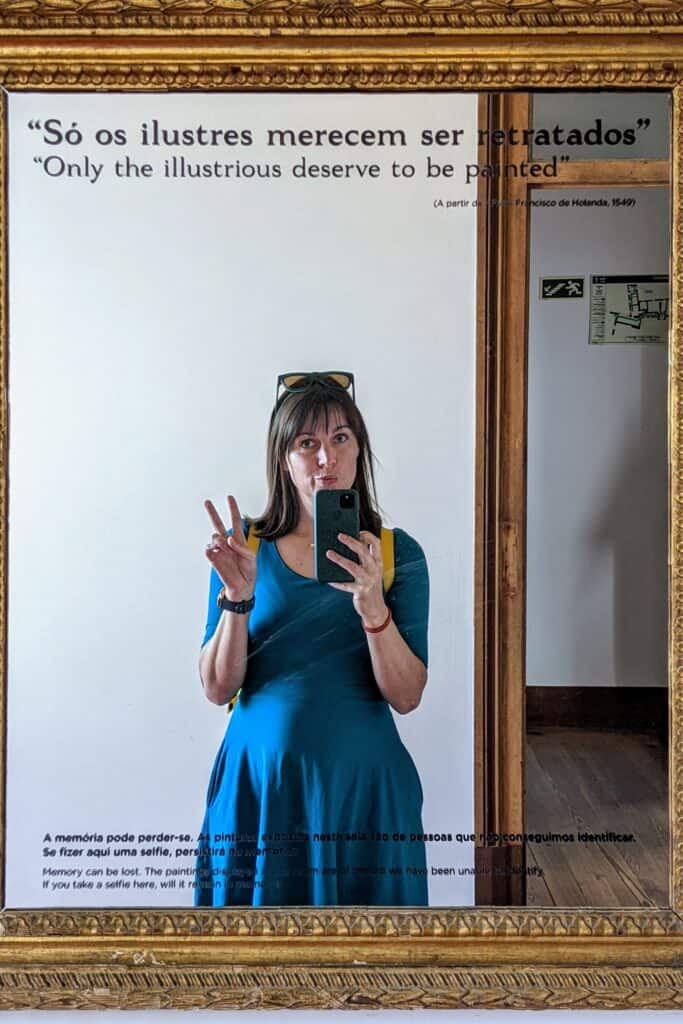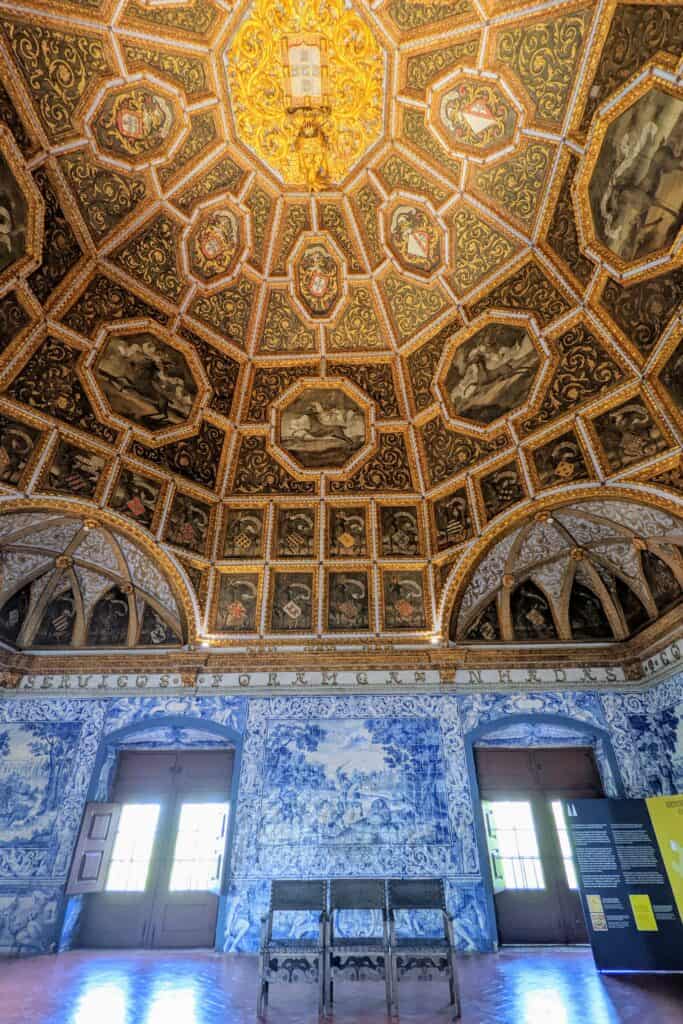3 Perfect Days in Lisbon: What to See and What to Skip
Portugal has made its way onto the destination list for American tourists in the past several years after winning several “Best New Destination” titles. Lisbon is the capital city of the up-and-coming destination. If you have a few days, this is how to spend 3 perfect days in Lisbon.
I’ll share my recommendations for what to see, where to stay, and how to get around.
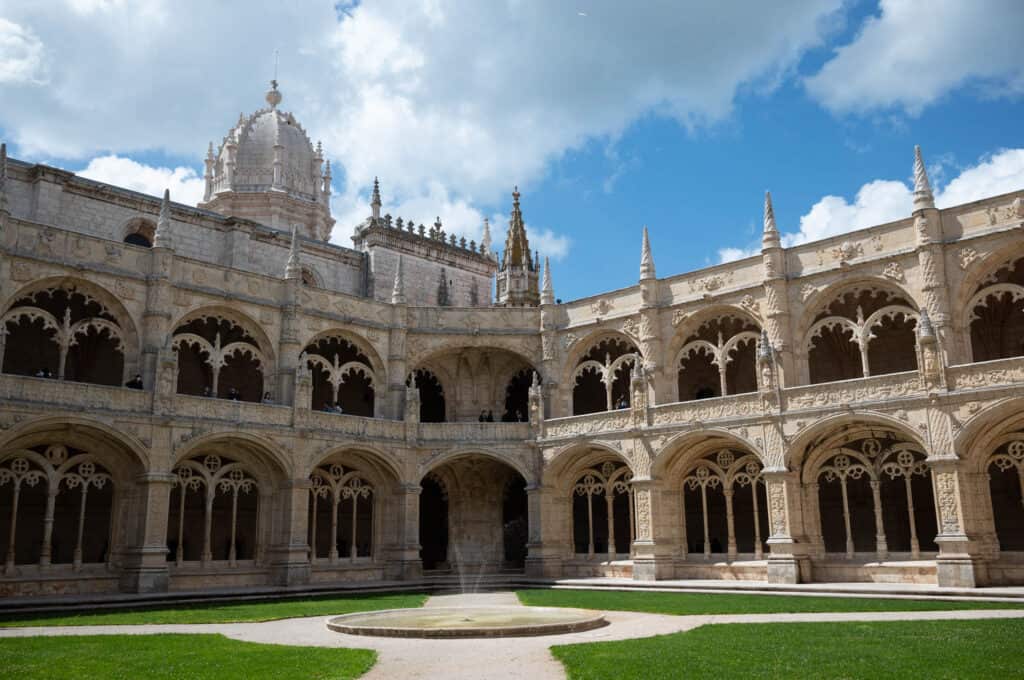
Some of the links on the page are affiliate links. If you choose to purchase from one of the links, I earn money at no extra cost to you. I’ll only recommend brands I’ve used and love (or an alternative I would book myself). As an Amazon Associate, I earn from qualifying purchases. I always pay for my own travel. I’ll be sure to let you know if that ever changes. If you choose to click through and purchase – thanks so much for the support!
Is 3 days enough time in Lisbon?
The first question I ask before any trip is, “How much time do I need?” There is plenty to see in Lisbon! 3 days is about right. If you have more time, it wouldn’t be wasted. There are so many day trip options.
3 days gives you time to explore Lisbon and take a day trip to nearby Sintra. Even though Sintra isn’t technically Lisbon, it is one of the best things to see.
If you only have two days, deciding what to cut out would be challenging. If it was me, I’d spend 1 very long day in Lisbon and the other day exploring Sintra.
Hopefully, you don’t have to make that choice!
If you need options for a 4 or 5-day itinerary in Lisbon, keep scrolling for ideas at the end of the post!
Where to stay
There are so many options for where to stay in Lisbon. We stayed at The Emerald House on the west side of the city. It was away from the tourist attractions in an area that felt much more residential than much of Lisbon. I enjoyed that we were closer to Belém and Sintra.
If we were going back, I’d stay here again. The staff was welcoming and warm. As a significant bonus, the kitchen could accommodate my Celiac Disease at the restaurant, which was super convenient for breakfast!
When deciding where to stay, there are a few areas to check out and some things to consider.
Bairro Alto
Bairro Alto is on a hill on the west side of the city. The area maintains much of the charm of its medieval beginning and is the city’s nightlife hub. The clubs and bars can get wild. So, if that’s your scene, you’ve found your people! If not, look elsewhere. In Bairro Alto, you can find upscale apartment lodging and more upscale hotels.
Baixa
Baixa is in the middle of Bairro Alto and Alfama. It’s in the lower part of the city, so you’ll be traveling uphill a fair bit from here. But, it’s so centrally located and very well connected. If we were staying in a different part of the city, we’d stay somewhere near Baixa. These are my picks for apartment style or an affordable well-reviewed hotel.
Alfama
Alfama is the oldest part of the city. It is also the area with the most charm. I can understand wanting to stay in this part of the city. When you see pictures of Alfama, it is picturesque. If you want to stay in Alfama, consider that it can be flooded with visitors from cruise ships during the day. So, explore your home base at other times.
The main thing to consider is that public transit in Alfama is connected but not well-connected. The well-known, but insanely busy Tram 28 is the primary way around. Expect to spend a fair bit of time walking up the hill when returning and down the hill when you go anywhere.
My hotel picks for Alfama: apartment style and an affordable, well-reviewed hotel.
Getting Around Lisbon
Walking
Lisbon is a very hilly city. If you’ve been to San Francisco, it’s like that…but worse.
I’m usually a stickler for exploring a city on foot, and I loved walking around Lisbon. I also realized that you’ll have to pick your battles in Lisbon. Most of the attractions in the central part of the city are close enough to walk if you’re okay pushing through uphill treks. To walk without the aerobic workout, you can take a tram or metro to the top of the hill and explore by walking down.
Wear comfortable shoes with sticky soles. I made the mistake of wearing a pair of loafers with slick bottoms to dinner one night and thought I would slide down the hill like I was ice skating!
Public Transit
Plan to take more public transit than you may take in another city. Luckily, the transit system in Lisbon is extensive and affordable. Trams, metros, buses, elevators, and funiculars get you up the steepest of hills.
As of April 2022, the rides were €1.50, and a day pass was €6.40. Get a viva pass at a yellow stand near a metro station for €0.50, and refill it as you go. The daily transit pass is likely worth it when you go to Belém and Sintra. It’s also nice because you don’t have to debate taking a tram when your feet and legs are already tired!
If you don’t have a Viva card, you can buy a pass when you board, but you’ll need exact change.
You can also get the Lisbon City Pass which gives you admission to attractions (like those in Belém) and the public transit system.
Rideshare and Taxi
Rideshare apps (like Uber) are much more affordable in Portugal than in the US. Traveling with a group of 3-4 also opens up the option of using a rideshare app. With four people hiring a ride was often cheaper than taking a tram. It blew my mind! I don’t necessarily love Uber as a company, but I do love being able to talk with local Portuguese drivers. The Portuguese are reserved but friendly and easy to talk to. Getting to know the drivers who took us to Sintra and Mafra was entertaining because we were with them for so long.
If you take one of the official taxis, they are equally affordable. Don’t take an unofficial one, or you’ll likely get scammed and pay more than you should.
3-Day Lisbon Itinerary
Now that you know where to sleep, it’s time to think about how to fill your days. I won’t include travel days in my plan. If you have time on the day you arrive or the day you leave, that is bonus time, congrats!
For the most part, the days in my itinerary are interchangeable. I’d keep the activities you do each day roughly the same, but if you need to work around the weather or ticket availability, feel free to shift the order. Really, do whatever you want. It’s your trip!
One thing you’ll notice in my itinerary (this one and all of them) is that we aren’t really into museums. We’ll typically skip every museum in a city unless it happens to be a world-famous one we feel we need to spend an hour visiting.
I am also not tempted to visit every church or cathedral on a recommendation list. We’re interested in something else. You’ll also notice that I love to leave time to wander beautiful places.
Day 1- Belém + A Walking Tour
Belém is an area of Lisbon that is a bit farther away from the center but is also home to some of the city’s most popular things to see.
To get there, take the 15E tram. The ride will be around 30 minutes, depending on where you’re staying. It’s €3 each way, or you can consider getting the 24-hour pass for about €6 (worth it on this day).
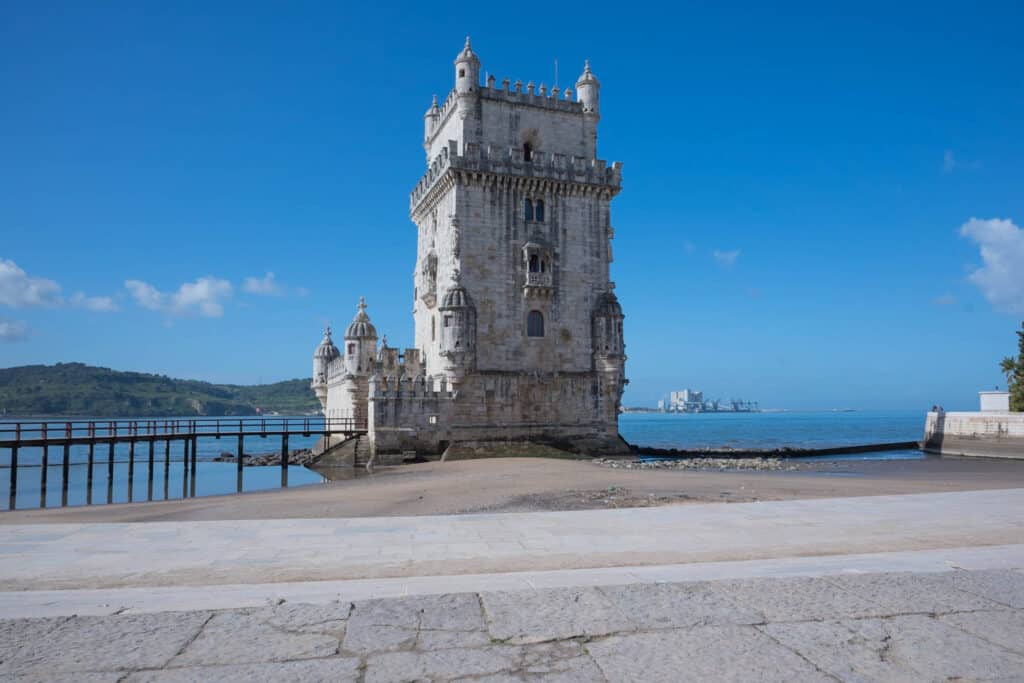
Start at Belém Tower
Kick off your day at Belém Tower. The tower opens at 10:00 a.m., but it’s worth getting there early if you want some great photos before the crowds show up!
Buy tickets from a kiosk a few meters away in the park. You can buy a combo ticket for the tower and the monastery you’ll visit later to save a bit. Entrance to the tower is €6, and the combo ticket is €10.
Starting your visit at the tower just as it opens means avoiding the crowds and lines that form later in the day.
The tower was built in the 1500s. It was an entry point to the city for travelers and goods arriving by sea. Later it became a prison when it was taken by the Spanish. The tower is so ornate and has nautical design themes, honoring the Portuguese accomplishments in ocean exploration.
If you start your day here, your visit will likely take around an hour, but probably less.

Head to the Discoveries Monument
After you visit Belém Tower, head down the waterfront toward the Discoveries monument. Along the way, you’ll find food carts and restaurant stalls if you need to grab a snack.
Henry the Navigator is at the head of the boat depicted on the monument. He was the son of a Portuguese king and champion of Portuguese exploration. He is also credited with starting the slave trade so…
The monument depicts different Portuguese explorers along each side. You can go up to the top of the monument (we didn’t). There is a beautiful tiled mosaic of a map and compass on the ground that you can see well from the top.
Visit Jerónimos Monastery and the Church of Santa Maria
The monastery and church are across the street from the monument. Look for a tunnel entrance to go under the busy street.
The monastery was built in the 1500s and is incredibly elaborate. As you walk along the exterior, you’ll already see the grandeur.
You’ll find two lines when you get to the entrances.
The line on the right enters the Church of Santa Maria. Touring the church is free, and the line moves quickly. This church is home to the tomb of Vasco de Gama. The first person to reach India by sea from Europe. The building itself is a wonder. It’s constructed to make it feel like it’s going on forever.
To visit the monastery cloister, you’ll want to join the longer of the two lines. Have your tickets before you visit, or buy them online while you wait. The cloister is beautiful and prominent. You’ll also see the church from a balcony with a good vantage point. As with the tower, your visit will likely be brief, but we found it worth it to pop in.
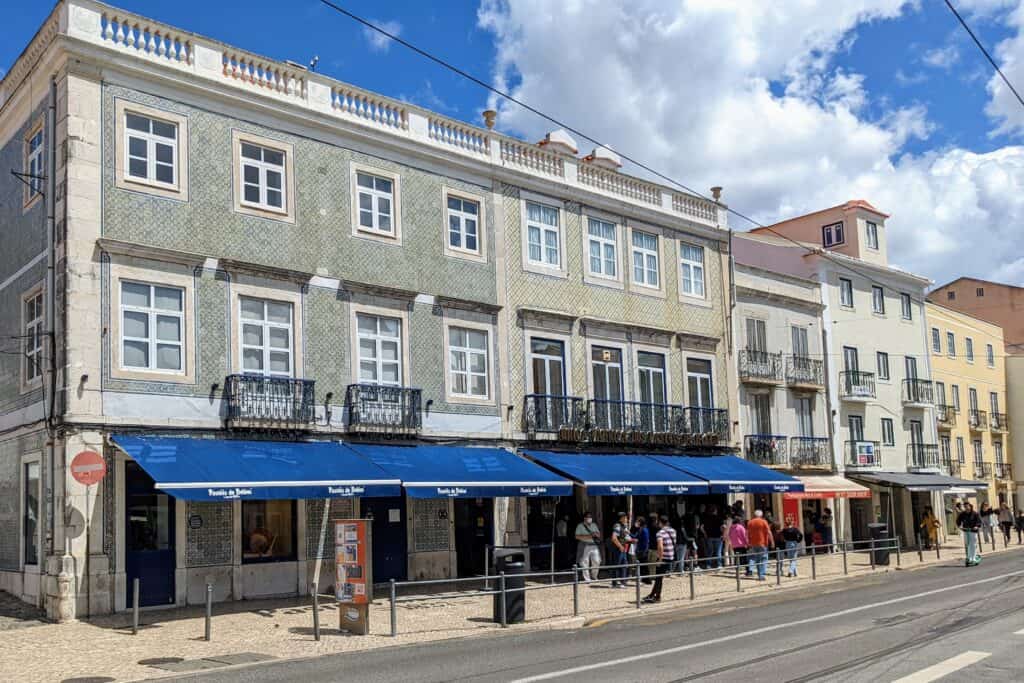
Eat lunch and try some Pastéis
After you visit the monastery, head to Pastéis De Belém. This shop claims the original Pastel de Nata that Portugal is known for.
The story goes that the monks at the monastery used egg white to starch their robes and had an excess of egg yolks. There was also a sugar cane factory nearby. So, they combined the two and created a delicious pastry. Eventually, the original recipe was sold to this bakery that still makes the original pastel de nata.
I couldn’t try them, but our friends said these were the best. After stocking up on pastries, find lunch nearby. There is a good sandwich shop if you can eat gluten.
If you’re Celiac like me, head to Zarzuela for lunch and gluten-free pastel de nata!
Take a walking tour
There are a few different options for walking tours.
If you’re not into walking, you can take a tuk-tuk tour or an electric bicycle tour.
I enjoyed the Rick Steves Europe walking tour of Lisbon. I like to pause a tour along the way and explore. That could be just me.
To take the tour, download the app and the tour audio the night before at your hotel. Bring your headphones along.
This tour started at the Praça do Comercio and took around 2.5 hours. This included moving slowly and stopping extra along the way.
We saw so much of Baixa and Bairro Alto! We even rode a tram up the hill and didn’t feel the need to track down Tram 28. It was the perfect way to spend the afternoon.
Dinner
After you finish your walking tour, you’ll likely have exhausted feet and legs. We were spent!
As you consider where to get dinner, look into one of the restaurants near a miradouro (overlook) of the city. Make a reservation to have dinner at sunset.
If you’re gluten-free or vegan, I recommend LOCAL Santos.
Day 2- Alfama and Wandering
Visit São Jorge Castle
Start your day by heading to the very well-known Alfama district. I’d recommend starting at the top of the hill at the castle. If you spend time in Lisbon, you’ll spot São Jorge Castle towering over the city.
The 11th-century castle opens at 9:00 a.m. daily. Tickets are €10, but there is no need to buy them early. The castle is fun to visit, but the real win here is the incredible view of the city. If you’re looking for a stunning sunset picture, visit the castle or the surrounding area near sunset.
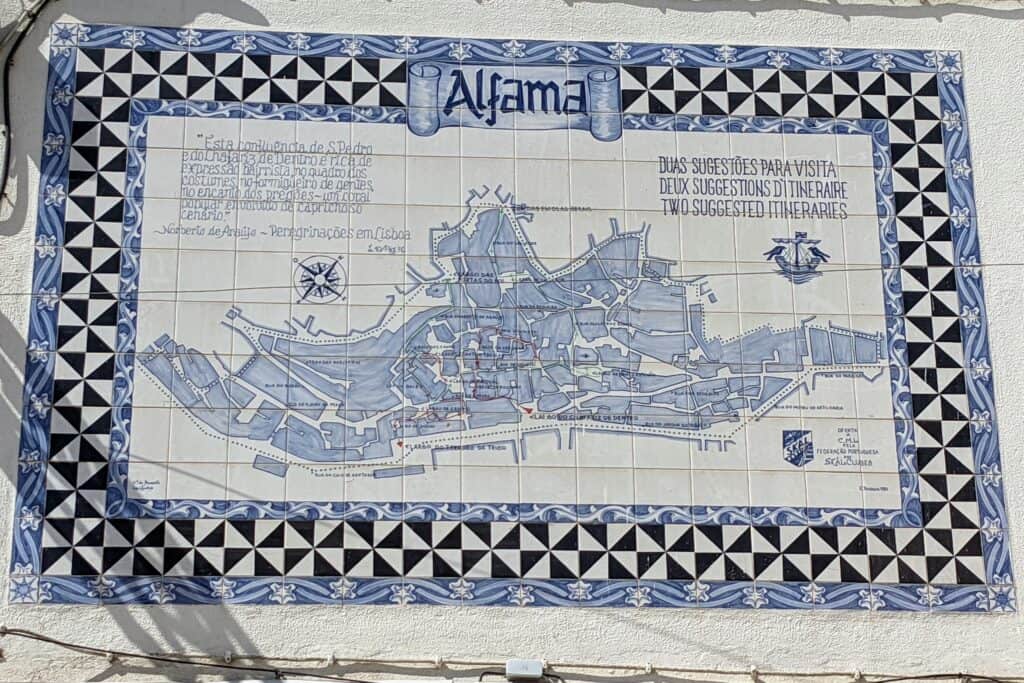
Wander in Alfama
Leaving the castle means you enter Alfama. This is the oldest part of the city, and it is beautiful to wander around. It felt like Trastevere in Rome except on a hill. I love to walk through neighborhoods like this, so it’s not surprising that Alfama was my quick favorite. I wanted to take pictures (with a camera and my brain) of every street and alley. It’s just so charming.
Spend time wandering the cobblestone streets and alleys. Stop in souvenir shops or walk into local groceries or fruit markets.
At some point in your wandering, you can start heading toward the Sé of Lisbon. The cathedral has a beautiful exterior, and you can also visit inside.
Tram 28 is the iconic tram that travels through Alfama. The tram is straight out of the 1930s. They are bright yellow with wooden seats on the inside. Newer trams can’t make the journey up Alfama’s steep, narrow, windy hills, so the old tram is the only option.
You can take the E28 tram to the castle if you’d like. This tram ride is beautiful and goes through some of the best parts of Lisbon. But it’s a tourist hot spot. The trams are super crowded for much of the day, and pickpockets target them. If you are set on doing it, get up early and ride the tram first thing. Ride the whole route without getting off; otherwise, you’ll have to wait in long lines to get back on.
If you’re flexible, consider the E12 or E24 routes. The Elevador da Glória was enough for me.
Grab lunch in Alfama or Baixa, depending on your interest. If you’re brave, head to Miss Can and try some of the canned fish Portugal is known for.
Traveler’s Choice
After wandering through Alfama and getting lunch, there are options for the afternoon!
Visit the Fado Museum, head to A Ginjinha to try the medicinal sour cherry drink at one of the original dispensaries, or wander a bit more in Bairro Alto. You can also take a food or wine tour if you’d like. Do whatever is left on your Lisbon bucket list!
If you’re all done with Lisbon and want to explore outside the city, you can take a day trip to Mafra. This is a good option if you can use a rideshare app. Otherwise, it may not be worth it for the time you have. Rideshare apps are surprisingly affordable in Portugal. More on that later!
Consider a Fado dinner show or visit a restaurant in Alfama or Chiado.
Day 3- A Day Trip to Sintra

There is a ton to see in Sintra, so it’s essential to plan your trip before you go. There is more to know about Sintra than I can fit in this little section, but I’ll do my best.
In addition to the town of Sintra, there are 4 main sites: Pena National Palace, Moorish Castle, Quinta da Regaleira, and Sintra National Palace.
If you’re willing to get up early, plan well, and walk a lot, you can see the sites in one day. If you want a slower day, you’ll need to pick 2. I think you should choose Pena National Palace and Quinta da Regaleira. Still, I could be convinced of the Moorish castle. You should skip Sintra National Palace, and I’ll happily explain why in a bit.
We lucked into some things on our trip that we could have planned for. It worked out well for us. Now, you get the inside info from our experience.
If you don’t want to self-plan your trip to Sintra, you can also take a guided tour.
Pena National Palace
Start your day at Pena National Palace. This palace has a yellow and red facade that makes it look like the setting of a fairytale.
This is the only site you’ll visit that requires a timed entry ticket! Try to get the earliest slot of the day that you can swing. Make sure you get there on time because they will not let you in late.
If you can swing it, rideshare out to Pena National Palace to arrive around 9:00 a.m. The gardens are open at 9:00, but the castle isn’t. This allows excellent views of the castle without the crowds. The castle opens at 9:30 a.m. If you have an entry in the earliest slot, you’ll likely be able to see parts of the castle with no other visitors in the rooms with you.
Take the train out of Estação do Oriente for the public transit option. You still want to take an early train to arrive as close to 9:00 a.m. as possible. Note that the 45-minute ride gets you to the city of Sintra. You’ll then take a car or a tuk-tuk up to Pena palace. The bus to the top isn’t a good option unless you want to be in a crowd with everyone else.
It took us about an hour and a half to visit the palace. We weren’t stuck in crowds and were able to move at a steady pace through the castle. If you visit later in the day, expect it to take longer.
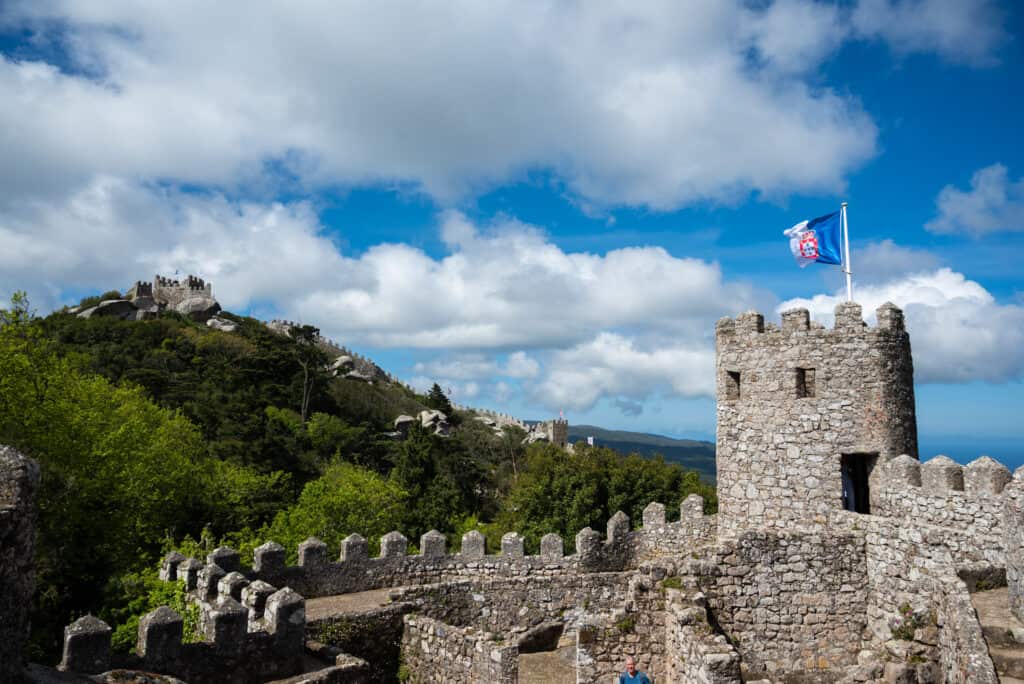
Moorish Castle
Starting with Pena Palace means you can make some judgment calls as you visit for the rest of your day. If you’re up to visiting 3 sites, you should see the Moorish castle next. Don’t try to skip the castle and come back later. The goal is to start at the top of the hill and work your way down.
The Moorish castle is a short downhill walk from Pena Palace. The castle is open 9:00 a.m. – 6:30 p.m. You can buy tickets at kiosks as you enter or buy them early. They aren’t timed, so if you think you want to see it, buy before you go and take screenshots since cell service is spotty. The castle is busiest around lunch, but I still wouldn’t say it’s busy.
The Moors were in Portugal from the 8th century to the 12th century. This castle dates back to their reign. It overlooks the city with an excellent view, and when you’re in Sintra, you can’t help but look up and notice the imposing castle high on the hill.

The castle is really ruins of a castle now, but you can walk on the walls, climb into some of the towers, and get some incredible views of the city. What makes this site amazing would be lost in fog or rain. So, consider skipping it if the weather doesn’t cooperate.
We packed a lunch and ate at the tables near the little kiosk inside the castle site. You can pack snacks if you’d like and grab lunch in the Sintra old town. You’ll walk right through it on your way to the next site. I enjoyed not having to worry about tracking down a restaurant. It was also efficient to explore instead of spending time at a restaurant.

Quinta da Regaleira
This site in Sintra is mind-blowing. This estate was built in the 1800s, and the gardens are incredible. I’m not usually one for exploring gardens, but even I enjoyed this. Add to it that the facade of the estate house is a work of art, and you can’t miss it.
Again, you can buy tickets to Quinta da Regaleira before you visit (untimed) or from the ticket agents as you enter the grounds. Either way is acceptable, but having the tickets before we went saved us some time. If you are still deciding if you’re ready to commit to the 3rd site, that’s okay. You won’t lose much time buying tickets onsite.
First, the map of the grounds is confusing. It’s a vast site, and the trails weave down the hill. The map has symbols marking grottos and pools. Start your visit going up to the Poço Iniciático (Initiation Well). If you want to explore the grounds above the well, do so before you enter. You’re going to walk down this 6-story spiral well and would have to walk back up afterward to see anything you missed.
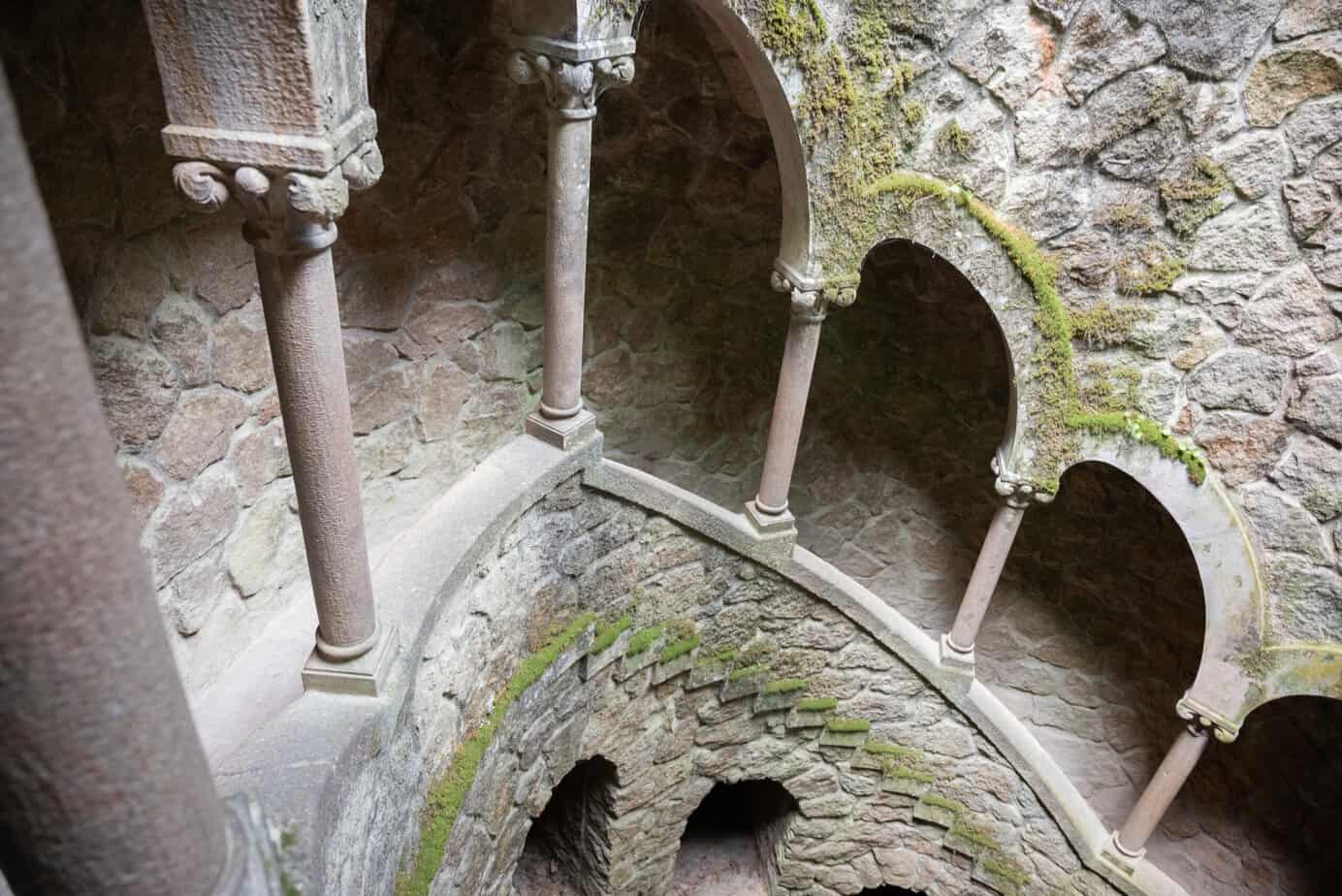
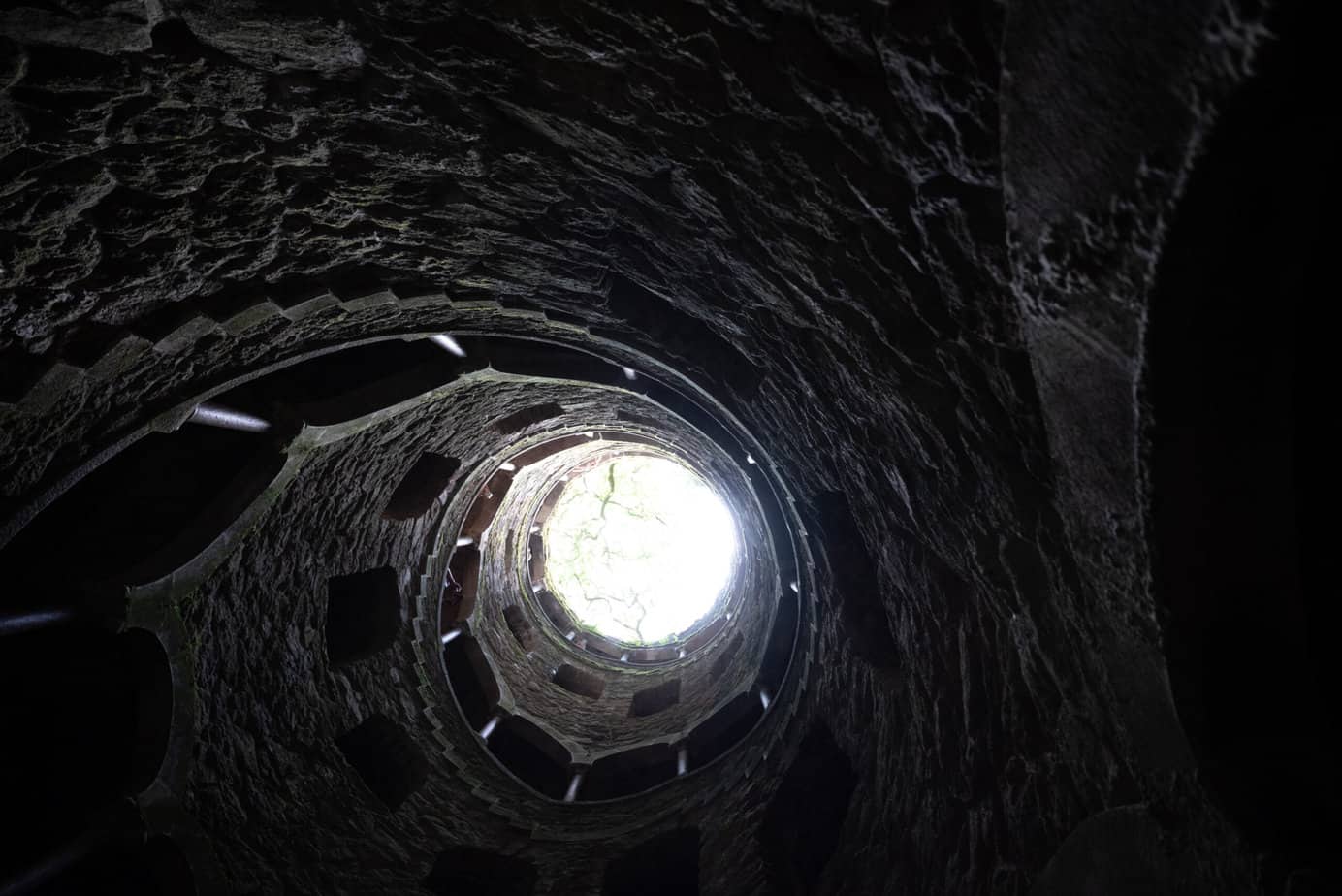
After the well, follow the trails down the hill toward the lake and the estate house. You’ll find various grottos and pools that are ornately decorated. There is a chapel worth checking out. You can also visit the inside of the estate. Only one floor was open, so it was a quick visit, but it was worth walking in.
Be on the lookout for benches and places to rest in the gardens as you walk. It’s a long day, and this is definitely the best place to relax in Sintra.
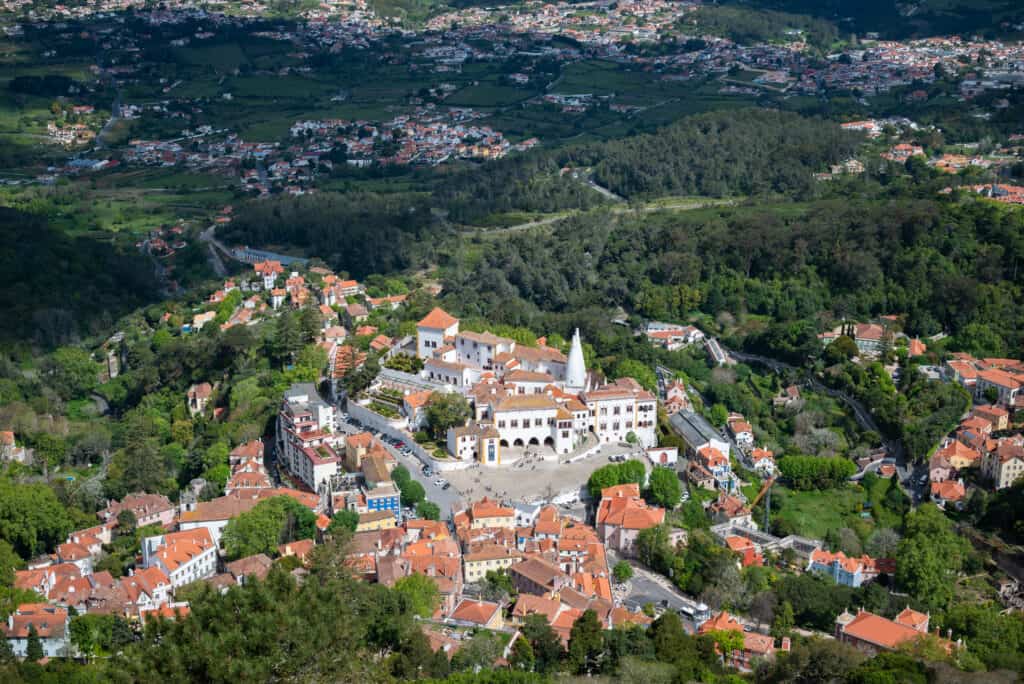
Sintra
After visiting Quinta da Regaleira, head down the road to the town of Sintra. You’ll see Sintra National Palace with its two white smokestacks. You can visit if you like, but I won’t recommend it.
Honestly, it was bland. The kitchens with the big smoke stacks were interesting. Otherwise, it was a less ornate, less well-done palace. Since we’d just visited Pena Palace, it was underwhelming. The palace does have some intricate tilework and ceiling decorations. But, overall, the whole group of us was underwhelmed. Maybe just because we were tired, but… I don’t think so.
Here are a few pictures I snapped so you can decide for yourself.
Instead, I’d wander around the city of Sintra. There is a shop that sells brightly colored tins of fish and several restaurants and shops.
If you can eat what you’d like, check out the traditional Travesseiro pastry from Piriquita. Portuguese friends called them “little pillows of heaven,” and based on reviews from our friends, it wasn’t an exaggeration!
After finishing up in Sintra, head back to Lisbon for dinner.
Creating a 4 or 5 Day Itinerary in Lisbon
If you happen to find yourself with more time in Lisbon, there are lots of options:
- Spend time in the areas you enjoy.
- Go on a food or wine tour.
- Check out the botanical gardens.
- Spend some time at LX Market.
- Go hunting for beautiful tile work throughout the city.
I’ve got you if you’re in the mood for some day trips! I love day trips because I can see more of a country without moving my stuff all over the place.

Mafra
I mentioned Mafra briefly a bit earlier. Mafra is a small town with a golden palace outside of Lisbon. The Portuguese monarchy built the palace at the height of the exploration in Brazil. The kingdom was bringing in a lot of gold. What better way to use your ill-gotten gains than to build a giant palace so every other country knows how strong you are?
Mafra is massive and beautiful. It’s also not a super popular trip because it isn’t connected by train. You can visit Mafra as a half-day trip or combine it with a visit to coastal Ericeira for a full-day experience.

Évora
A day trip to Évora is kind of a long day on a train. After walking around Lisbon, this was a welcome slowdown in our week! This city is home to the ruins of a Roman temple and a chapel of bones. The chapel of bones is just as creepy as it sounds. The hope is that it draws your attention to death to impact how you live your life. I avoid creepy things at all costs. Honestly, my husband was confused by my desire to visit the chapel. I’m glad we did. It was a little creepy but also fascinating.
If you’re gluten-free, there is an excellent dedicated gluten-free restaurant in Évora.
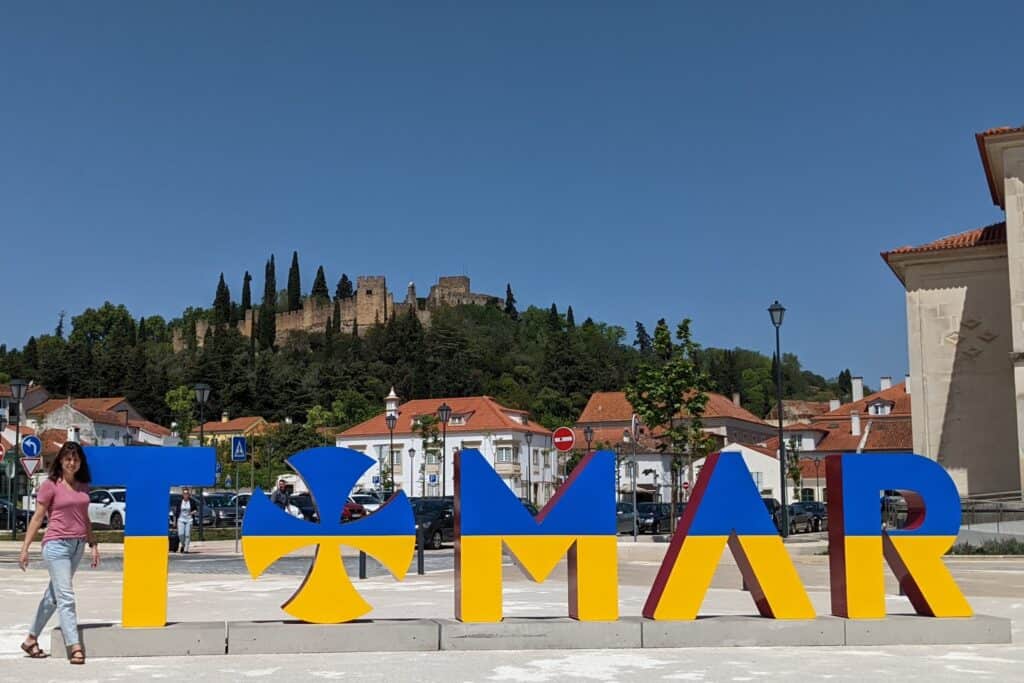
Tomar
Tomar is the Portuguese seat of the Knights Templar. This crusading army was lavish with money and built large castles to hold their ranks. The Convent and Castle on the top of the hill are imposing but a fun visit.
Coimbra
Coimbra is the old capital of Portugal. There is a well-preserved medieval center in the city that is fun to wander around. The University of Coimbra is also worth a visit. It was under construction in April 2022, so check that before you go. It was less attractive when 2/3 of the buildings were covered in tarps.
When to Visit Lisbon
As with most cities, visiting during the shoulder season is ideal. Lisbon will be pretty warm in summer. Trekking up the hills in the summer heat with the summer travel crowds is not ideal. If it’s your only option, it is what it is. Just be prepared with water and sunscreen.
Fall and spring would be ideal seasons to visit. We visited in April of 2022, and it was perfect. The crowds weren’t bad, and the weather was excellent. I was comfortable in jeans and a t-shirt most of the time and only had to carry around a light jacket for the morning and evening.
No matter when you visit, I hope you fall in love with Portugal as I did!
Is 3 days enough for Lisbon?
Yes! 3 days in Lisbon is just barely enough to see all of the main sites.
How to spend 3 days in Lisbon?
1 day- touring Lisbon; Alfama, Bairro Alto, and Baixa. Consider a tour to see as much as possible.
1 day- visit Belem. Tour Belem Tower and the monastery. Try Pasteis de Belem. Spend any remaining time visiting sites in Lisbon
1 day- Visit Sintra. Pena National Palace is a must when you’re in Lisbon!
How days are needed in Lisbon?
3-4 days is a good amount of time in Lisbon.
Should I go to Lisbon or Porto?
It depends.
Lisbon has more to do and has Sintra so it’s probably the top pick.
Porto is smaller and slower-paced. So, if you like laid-back towns head to Porto.
Honestly, visit both!
Is 7 days too long in Lisbon?
Maybe. There are so many day trips from Lisbon you’d be able to spend your time seeing extra sites. But, consider spending 4 days in Lisbon and 3 in Porto or Faro.


